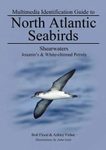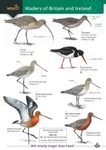Monograph
By: Ronald W Summers(Author), Jeremy JD Greenwood(Foreword By)
352 pages, 150+ colour & b/w photos, 100+ colour & b/w illustrations and colour maps, colour tables
A richly illustrated synthesis of published and unpublished data from 50 years worth of study of the purple sandpiper.
![The Purple Sandpiper The Purple Sandpiper]()
Click to have a closer look
About this book
Customer reviews
Related titles
About this book
This book is a comprehensive synthesis of data from both published and unpublished studies and surveys of Purple Sandpipers over 50 years. Much of the data have been collected by a group of bird enthusiasts from Scottish ringing groups who have studied these birds on the wintering grounds in Scotland, Ireland and northern Norway, as well as the breeding grounds in Iceland, Norway and Svalbard.
Purple Sandpipers breed as far north as the polar deserts of Franz Josef Land, south to the mountains of Norway and Scotland. Each population has a different migration pattern after breeding. Those that breed in Iceland remain in Iceland for winter, whereas birds that breed in Arctic Canada cross the Atlantic in a 2.5-day flight during November and December to winter in Western Europe. For much of the year, they live on the exposed rocky seashores of the North Atlantic, feeding on periwinkles and mussels. Some even live in the gloom of the endless night, north of the Arctic Circle, contrasting with other sandpiper species that spend the winter in the tropics. The book draws comparisons with other waders, showing how Purple Sandpipers have adapted to their unusual way of life, and how the evolution of sexual size dimorphism has had a knock-on effect on the diet, juvenile survival and sex ratio. The book also describes the status of the Purple Sandpipers populations, which are declining. The steady warming of the Arctic is thought to be having a negative effect on sandpiper productivity, although it is not known if this is because of a decline in the food supply or an increase in predation.
Written in a popular style and richly illustrated with over 100 graphs and maps, and over 150 photographs, this book, which is fully referenced, is both informative and thought-provoking for all that have an interest in natural history.
Customer Reviews (1)
-
The perfect single species study
By
Keith
1 Feb 2024
Written for Hardback
There is something really impressive about a single-species monograph that is privately published by the person who spearheaded much of the work inside. In this case, Ron Summers was part of a small group in Scotland who realised in the late 1960s that there were hardly any ringing recoveries of Purple Sandpipers Calidris maritima. In the decade that followed, he and others made great strides to rectify this with targeted ringing on both the east and west Scottish coasts, and now over 9000 have been ringed. Also from the 1970s onwards, he organised expeditions to find the birds breeding in Norway, Iceland and Svalbard. In addition to the data that his own studies have collected, Summers has brought together everything that is known about the species, mostly from European studies, as by comparison relatively little seems to have been published about the North American wintering population despite birds there being in decline.
The book is divided into 15 chapters with the last being a synthesis of everything. In addition to outlining the work in Scotland and in the various breeding areas (including the tiny UK population), there are core chapters examining the birds’ size, breeding distribution and numbers, nesting activity, migration, plus plumage and moult. For those more interested in the winter distribution and numbers, these are given a chapter as are discussions on how these populations have fluctuated, the preferred habitats, feeding behaviour, body mass, site fidelity, local movements, survival and population dynamics.
There are many interesting facts revealed from Summers' work and those of others. There has been a northwest shift in the winter distribution of Purple Sandpipers within the UK which may be linked to climate change, or because Canadian birds (which winter in northern Scotland) are doing better than those in Norway (that winter on the east coast). Declines have also been recorded in Iceland where birds are both migratory and resident. The future is uncertain for this and other waders that rely on the tundra for breeding. This habitat is predicted to decline by between 40% and 57% by the time carbon dioxide has doubled from pre-industrial levels as boreal forest replaces it. The tundra can not move northwards as the Arctic Ocean occupies latitudes north of 80°N. Summers warns that the 15 million breeding waders in this habitat could be halved in number. In addition, on our rocky shores sea level is predicted to rise by up at least 40 cm which will reduce the available feeding and roosting habitat. However, on the other hand, increased wind action may result in more seaweed being washed up, providing good feeding habitat. So the future offers many conundrums.
Among the other fascinating insights are discussions on the fact that as in other monogamous small waders, females are larger than males. The relatively small males have short bills which could be advantageous as they undertake most of the brood attendance. But also this possibly reduces feeding competition between the sexes. Also, I have often wondered why Purple Sandpipers stop in Spain and do not migrate further south into Africa like Turnstones Arenaria interpres. Summers suggests that in the tropics, invertebrates would find the rocky intertidal zone too hot at low tide. Also the coasts of Britain offer a greater tidal range and therefore more feeding opportunities.
These are just a few examples of how comprehensive this book is. It is a delight to read, being well designed and created in an engaging style. It is a summary of research that has covered more than 50 years. It is personal research at its very best and is a reminder of how without this kind of effort we would have little idea of what is happening to our bird populations.
3 of 3 found this helpful
-
Was this helpful to you? Yes No
Monograph
By: Ronald W Summers(Author), Jeremy JD Greenwood(Foreword By)
352 pages, 150+ colour & b/w photos, 100+ colour & b/w illustrations and colour maps, colour tables
A richly illustrated synthesis of published and unpublished data from 50 years worth of study of the purple sandpiper.



























